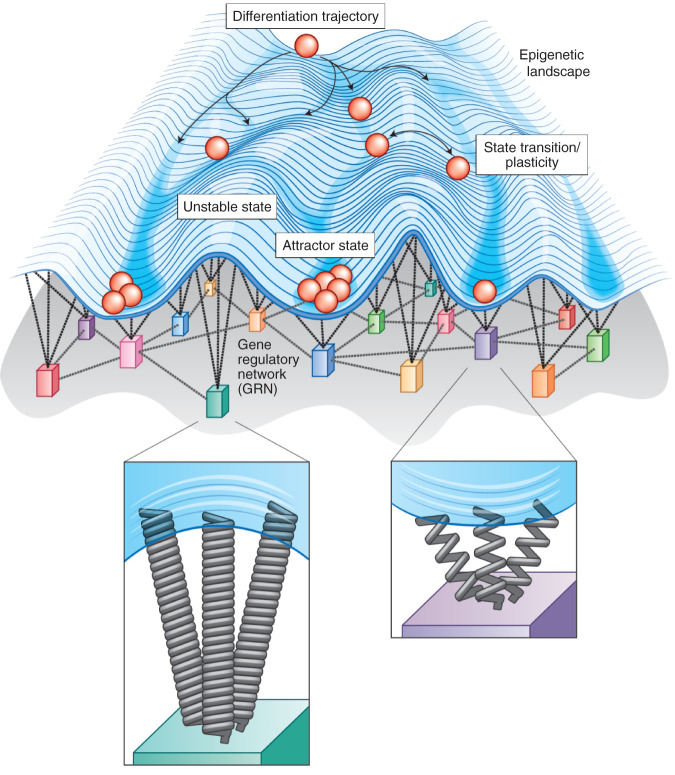Figure 1.
Waddington's epigenetic landscape depicts the process of development as balls rolling down a hill that tend toward more stable phenotypes (represented by valleys or “canals”). Waddington's epigenetic landscape depicts cell fate (differentiation) trajectories as balls rolling down a rugged landscape. The likelihood of a cell adopting a given state is represented by the elevation or depression of the landscape, that is, a likely, stable cellular state (as determined by its gene expression profile) is depicted as a valley and unlikely states are represented by elevated hilltops. More recently, mathematical modeling of transcriptional dynamics has, in part, provided the mechanistic underpinnings of this phenomenon of canalization. For a cell to change its phenotype, the cell must transition from an original phenotype that is evolutionarily adaptive (and, therefore, very stable, e.g., attractor state 1) to a new stable phenotype (e.g., attractor state 2). This transformation is driven by the gene regulatory network (GRN), or the overarching architecture between all gene products that orchestrates gene expression profiles and, in turn, determines the final cellular “state” or phenotype. While a given cell can adopt different states along its differentiation trajectory, it can also undergo a state transition or exhibit plasticity between states at a given time point in its development.

